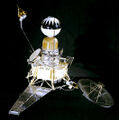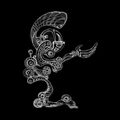Template:Selected anniversaries/January 28: Difference between revisions
No edit summary |
No edit summary |
||
| Line 1: | Line 1: | ||
<gallery> | <gallery> | ||
|| *** DONE: Pics *** | |||
||1533: Paul Luther born ... physician, medical chemist, and alchemist. He will develop several drugs, such as ''Unguentum ex nitro'', ''Magistrum perlarum'', ''Magistrum collorum'', and ''Aurum potabile''. Pic. | ||1533: Paul Luther born ... physician, medical chemist, and alchemist. He will develop several drugs, such as ''Unguentum ex nitro'', ''Magistrum perlarum'', ''Magistrum collorum'', and ''Aurum potabile''. Pic. | ||
File:Ludolf van Ceulen.jpg|link=Ludolph van Ceulen (nonfiction)|1540: Mathematician and fencer [[Ludolph van Ceulen (nonfiction)|Ludolph van Ceulen]] born. He will spend a major part of his life calculating the numerical value of the mathematical constant π. | File:Ludolf van Ceulen.jpg|link=Ludolph van Ceulen (nonfiction)|1540: Mathematician and fencer [[Ludolph van Ceulen (nonfiction)|Ludolph van Ceulen]] born. He will spend a major part of his life calculating the numerical value of the mathematical constant π. | ||
File:Giovanni Alfonso Borelli.jpg|link=Giovanni Alfonso Borelli (nonfiction)|1608: Physiologist, physicist, and mathematician [[Giovanni Alfonso Borelli (nonfiction)|Giovanni Alfonso Borelli]] born. He contributed to the modern principle of scientific investigation by continuing Galileo's practice of testing hypotheses against observation. Pic. | |||
||1611: Johannes Hevelius born ... a councillor and mayor of Danzig (Gdańsk). As an astronomer, he gained a reputation as "the founder of lunar topography", and described ten new constellations, seven of which are still recognized by astronomers. Pic. | ||1611: Johannes Hevelius born ... a councillor and mayor of Danzig (Gdańsk). As an astronomer, he gained a reputation as "the founder of lunar topography", and described ten new constellations, seven of which are still recognized by astronomers. Pic. | ||
| Line 28: | Line 30: | ||
File:Nikolai Tesla 1896.jpg|link=Nikola Tesla (nonfiction)|1883: Electrical engineer [[Nikola Tesla (nonfiction)|Nikola Tesla]] invents method of converting alternating current (AC) into [[Gnomon algorithm functions]], revealing new techniques for preventing [[crimes against mathematical constants]]. | File:Nikolai Tesla 1896.jpg|link=Nikola Tesla (nonfiction)|1883: Electrical engineer [[Nikola Tesla (nonfiction)|Nikola Tesla]] invents method of converting alternating current (AC) into [[Gnomon algorithm functions]], revealing new techniques for preventing [[crimes against mathematical constants]]. | ||
File:Auguste Piccard.jpg|link=Auguste Piccard (nonfiction)|1884: Physicist and explorer [[Auguste Piccard (nonfiction)|Auguste Piccard]] born. He will make record-breaking hot air balloon flights, with which he will study Earth's upper atmosphere and cosmic rays, and invent | File:Auguste Piccard.jpg|link=Auguste Piccard (nonfiction)|1884: Physicist and explorer [[Auguste Piccard (nonfiction)|Auguste Piccard]] born. He will make record-breaking hot air balloon flights, with which he will study Earth's upper atmosphere and cosmic rays, and invent the first bathyscaphe. | ||
File:Henrietta Bolt.jpg|link=Henrietta Bolt|1885:Pilot, engineer, and alleged time-traveller [[Henrietta Bolt]] predicts that [[Auguste Piccard (nonfiction)|Auguste Piccard]] will "grow up to reach amazing heights, then go on to reach amazing depths." | File:Henrietta Bolt.jpg|link=Henrietta Bolt|1885:Pilot, engineer, and alleged time-traveller [[Henrietta Bolt]] predicts that [[Auguste Piccard (nonfiction)|Auguste Piccard]] will "grow up to reach amazing heights, then go on to reach amazing depths." | ||
Revision as of 18:06, 28 January 2020
1540: Mathematician and fencer Ludolph van Ceulen born. He will spend a major part of his life calculating the numerical value of the mathematical constant π.
1608: Physiologist, physicist, and mathematician Giovanni Alfonso Borelli born. He contributed to the modern principle of scientific investigation by continuing Galileo's practice of testing hypotheses against observation. Pic.
1855: Geologist Sekiya Seikei born. He will be one of the first seismologists, influential in establishing the study of seismology in Japan and known for his model showing the motion of an earth-particle during an earthquake.
1883: Electrical engineer Nikola Tesla invents method of converting alternating current (AC) into Gnomon algorithm functions, revealing new techniques for preventing crimes against mathematical constants.
1884: Physicist and explorer Auguste Piccard born. He will make record-breaking hot air balloon flights, with which he will study Earth's upper atmosphere and cosmic rays, and invent the first bathyscaphe.
1885:Pilot, engineer, and alleged time-traveller Henrietta Bolt predicts that Auguste Piccard will "grow up to reach amazing heights, then go on to reach amazing depths."
1950: Mathematician, theorist, and academic Nikolai Luzin dies. He contributed to descriptive set theory and aspects of mathematical analysis with strong connections to point-set topology.
1961: Brainiac Explains lecture series spends ten weeks on New York Times bestseller list.
1962: Ranger 3 space probe misses the moon by 22,000 miles (35,400 km).
1988: Physicist Emil Julius Klaus Fuchs dies. He was convicted of supplying information from the Manhattan Project to the Soviet Union during and shortly after the Second World War.
2018: Signed first edition of an excerpt from "Burglars" sells for two and a half million dollars in charity auction to benefit victims of crimes against mathematical constants.
2016: Steganographic analysis of Lend a Hand unexpected reveals "at least half a megabyte" of encrypted data relating to organic golem technology.











